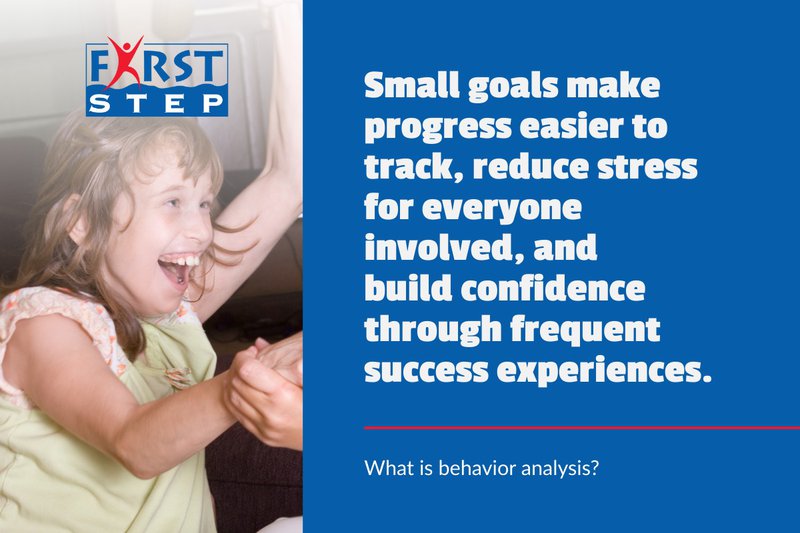As a parent of a child with a disability, you’ve probably asked yourself, “What is behavior analysis?” Understanding what it is can transform how you support your child with autism at home. You don't need formal training; with the right tools and simple steps, you can implement Applied Behavior Analysis (ABA) strategies every day. So, what is behavior analysis? A way to help your child develop essential skills and reduce challenging behaviors.
Key Takeaways
- Positive reinforcement serves as the foundation for all behavior change
- Structured routines and clear rules provide predictability and reduce stress
- Task analysis breaks complex skills into manageable steps for easier teaching
- Visual supports and timers smooth transitions and prevent outbursts
- Functional Communication Training (FCT) teaches appropriate ways to express needs
- ABC data collection identifies behavior patterns and triggers
- Token systems motivate positive behaviors and build lasting habits
- Consistent implementation and family involvement maximize success
What Is Behavior Analysis in Practice
What is behavior analysis? At its core, behavior analysis is the scientific study of how environmental factors influence behavior. When applied to autism therapy, this approach provides structured methods to teach new skills while reducing problematic behaviors through systematic observation and intervention.
The best way to begin using behavior analysis at home starts with three fundamental strategies: praise, reinforcement of patterns, and taking small steps. These foundational elements create the framework for more advanced techniques as your child progresses.
Using Positive Reinforcement Effectively
Positive reinforcement represents the most critical skill for parents to master first. When your child demonstrates desired behavior—saying "thank you" or sitting calmly during meals—immediately provide a meaningful reward. This quick response helps your child connect their actions to positive outcomes.
Your reinforcement doesn't require elaborate rewards. A genuine smile, enthusiastic hug, or playful high-five often works better than expensive toys. The key lies in timing—deliver the reward immediately after the desired behavior occurs.
Focus your reinforcement on behaviors you want to see more frequently. When children engage in challenging behaviors like yelling or throwing items, avoid accidentally rewarding these actions. Over time, children learn that calm, appropriate choices consistently bring positive results.
Establishing Routines and Clear Expectations
Children with autism often feel more secure when they can predict what comes next in their day. Creating a structured daily schedule provides this crucial predictability. Consider implementing consistent timing for key activities: waking up, eating meals at the same location, following visual charts for hygiene routines, and using timers to manage screen time.
Establish simple, clear rules and review them regularly with your child. Use pictures or visual supports if your child struggles with verbal instructions. For example, a helpful house rule might state: "Use words or pictures to ask for help instead of hitting."
Breaking Tasks Into Manageable Steps
Children don't learn complex skills like dressing or tooth brushing all at once. Behavior analysis uses task analysis to teach these abilities step-by-step, making learning more achievable and less overwhelming.
Task analysis involves breaking a skill into its smallest parts and teaching each step individually. For tooth brushing, the steps might include: picking up the toothbrush, applying toothpaste, turning on the water, brushing the top teeth, brushing the bottom teeth, spitting, rinsing, and putting the brush away.
Behavior analysis promotes teaching one step at a time, celebrating each small success. If a particular step proves challenging, break it down further and add support through pointing or gentle guidance, then gradually reduce this assistance as your child gains confidence.

What Is Behavior Analysis: Teaching New Skills Through Structured Methods
Implementing Discrete Trial Training (DTT)
Discrete trial training (DTT) provides an excellent structured approach to teaching your child specific new skills. DTT works particularly well for concrete tasks like identifying colors, following directions, or learning self-care routines.
Begin by giving a clear instruction: "Pick up the brush." Wait for your child's response, then immediately provide feedback. Correct responses earn enthusiastic praise and tangible rewards. Each successful trial builds your child's confidence and understanding.
Utilizing Natural Environment Teaching (NET)
Natural Environment Teaching offers a more casual approach that integrates seamlessly into daily routines like play time or meals. When your child wants a cookie, you might ask, "What do you want?" This creates a natural opportunity to teach them to verbally request "cookie" or use sign language.
NET helps children generalize skills across different settings and situations, making their learning more functional and applicable to everyday life.
Mastering Prompting and Fading Techniques
Prompting helps children succeed while learning new skills by providing just enough assistance to ensure success. Start with the least intrusive prompt necessary—perhaps verbal instruction—and only add more support if needed.
Fading represents the gradual reduction of prompts as your child's independence grows. This systematic process moves from more intensive support to complete independence, building your child's confidence along the way.
For parents seeking more comprehensive information about applied behavior analysis techniques, First Step, Inc. offers extensive resources to support your family's journey.
Reducing Problem Behaviors Through Behavior Analysis
What Is Behavior Analysis: Understanding the ABC Approach
To effectively address challenging behaviors, start by examining what leads up to them and what follows. The ABC approach provides this comprehensive analysis:
- Antecedent: What happened immediately before the behavior
- Behavior: The specific action that occurred
- Consequence: What happened immediately after the behavior
If your child hits to avoid cleaning up toys, the behavior likely serves an escape function. Once you identify this pattern, you can teach a more appropriate way for your child to request a break from the activity.
Implementing Functional Communication Training (FCT)
Functional Communication Training teaches children to communicate their needs appropriately rather than resorting to challenging behaviors. Instead of crying for a preferred toy, teach your child to say "toy, please" or hand you a picture of the desired item.
Immediately honor appropriate communication attempts to demonstrate that this new method works effectively. Over time, this approach significantly reduces tantrums and other challenging behaviors while building essential communication skills.
Managing the Extinction Burst
When you stop reinforcing a challenging behavior, expect to see an extinction burst—a temporary increase in the intensity or frequency of the unwanted behavior. For example, if your child typically yells for snacks and you stop providing them immediately, expect louder yelling initially.
Stay consistent with your new approach, and the behavior will eventually fade as your child learns that calm requests work better. Extinction bursts indicate your intervention is working.
What Is Behavior Analysis: Visual Supports and Communication Tools
Creating Visual Schedules and Supports
Visual schedules provide crucial structure for children with autism by showing the sequence of daily activities. Start with pictures representing key events: waking up, eating breakfast, engaging in therapy activities, playing, and preparing for bedtime.
The Picture Exchange Communication System (PECS) can enhance communication by teaching children to give pictures of desired items rather than using challenging behaviors to express their needs. Start with pictures of highly preferred items and immediately provide the requested item when your child uses the picture appropriately.
Implementing Emotion Charts
Many children struggle to identify and express their emotions verbally. Emotion charts using facial expressions—happy, sad, angry, frustrated, excited—help children communicate their internal states more effectively.
When your child points to a feeling face, you gain insight into their emotional experience and can teach appropriate coping strategies. For anger, you might introduce stress balls or deep breathing techniques.
Using Social Stories for Complex Situations
Social stories use simple pictures and text to explain challenging situations before they occur. A grocery store social story might include: "We go to the store to buy food. I stay with Mom and use a quiet voice. When we finish shopping, I can choose a special snack."
Read the story before outings and bring it along for reference. These visual supports reduce anxiety by making abstract social expectations concrete and understandable.
For families interested in learning more about behavior analysis activities at home that support communication development, First Step provides comprehensive resources and professional guidance.
Building Effective Reinforcement Systems
Setting Up Token Boards
Token boards provide visual systems that help children earn rewards for positive behaviors. Give tokens—stars, stickers, or checkmarks—immediately after desired behaviors occur. Once your child collects the predetermined number of tokens, they receive their chosen reward.
Select rewards that truly motivate your child, whether that's extra screen time, special activities, or preferred items. Initially, require only a few tokens before providing rewards, then gradually increase the requirement as your child develops stronger behavior patterns.
Understanding Reinforcement vs. Bribery
Reinforcement differs significantly from bribery. Reinforcement happens before or immediately after desired behavior to teach and strengthen it. Bribery occurs after misbehavior to stop it temporarily.
Saying "Clean your toys and earn a token" represents appropriate reinforcement. However, saying "Stop throwing toys and I'll give you candy" sends problematic messages about behavior expectations.
Use tokens for behaviors you want to increase—sitting appropriately during meals, remaining calm during transitions, or waiting patiently. Keep all family members aligned with your token system for maximum effectiveness.
What Is Behavior Analysis: Tracking Progress and Maintaining Consistency
Implementing Simple Data Collection
Start with basic tracking sheets to monitor your child's progress toward specific goals. Write the target behavior at the top and record what happened before, during, and after each occurrence using the ABC format.
Use simple recording methods like tally marks, stickers, or smiley faces that match your child's understanding level. Focus on one or two key behaviors per day to make progress visible and manageable.
Document your observations and share them with your child's behavior therapist or BCBA. Your home data provides valuable insights that help the professional team adjust intervention plans based on real-world effectiveness.
Setting Realistic Goals and Preventing Burnout
Focus on achievable objectives that build momentum rather than overwhelming your family. Small goals make progress easier to track, reduce stress for everyone involved, and build confidence through frequent success experiences.
Remember that your well-being directly impacts your ability to support your child effectively. Schedule regular breaks and maintain communication with your child's treatment team about what's working and what needs adjustment.
Use visual reminders, timers, and written plans to maintain consistency even during stressful periods. Expect some setbacks—these are normal parts of the learning process for both you and your child.
Parents seeking additional support can explore the services available through First Step's experienced team of professionals. For more information, visit Empowering You: A Guide for Parents of Children with Disabilities.
What Is Behavior Analysis: Moving Forward With Confidence
You not only have practical tools for implementing ABA therapies in your daily routines, but now you can answer that question: “What is behavior analysis?” From positive reinforcement and visual supports to structured teaching methods and progress monitoring, these evidence-based strategies can transform your child's learning and development.
Remember that every child progresses at their own pace, and small steps forward deserve celebration. Consistency and patience remain your most powerful tools when combined with the structured approaches outlined here.
For families ready to take the next step in their behavior analysis journey, First Step, Inc. offers professional ABA therapy services designed to complement your home efforts. Our experienced team specializes in improving the lives of children with autism through evidence-based Applied Behavior Analysis interventions tailored to each child's unique needs.
Together with dedicated families like yours, we're committed to making your child's first steps the right steps toward a brighter, more independent future. Contact us today to learn how our comprehensive treatment programs can support your family's goals and help your child reach their full potential.


